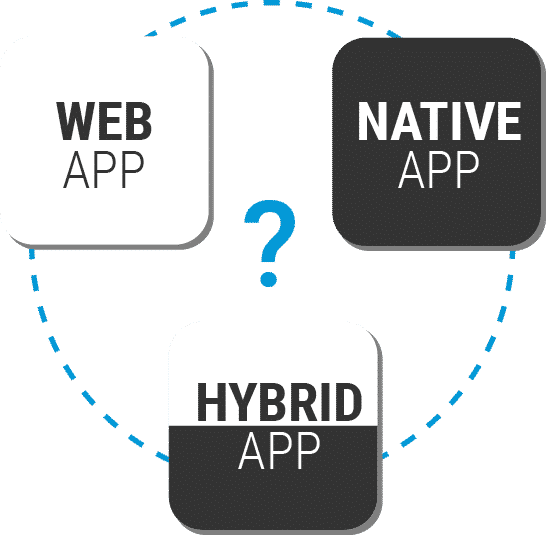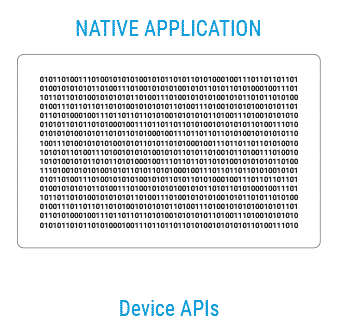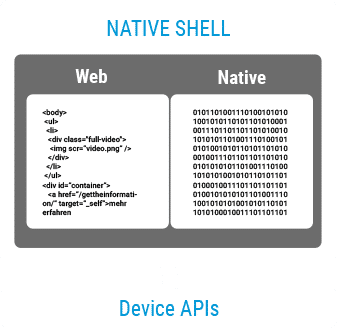Mobile App Development (MAD)
HOW MOBILE APPLICATIONS ARE REVOLUTIONIZING THE BUSINESS WORLD
Mobile applications (short apps) have become an important part of our lives today. In many large and medium-sized companies, these contribute to the increase in value. The spectrum ranges from supplying customers with useful information to providing services for employees.
As appealing as these apps are, so too is the development. For this reason, more and more mobile application development platforms (MADPs) have become established in the market in the past. The advantages that these offer for creating enterprise apps will be explained in more detail below.
Definition Mobile App Development:
Mobile application development encompasses all the processes and procedures used to create software for small wireless computing devices such as smartphones or tablets.
History
In recent years, the mobile app development has created a new, enormously successful and highly dynamic area of industrial software development. Although the first mobile apps came on the market as early as the 1990s, the real breakthrough only began with the opening of the Apple App Store on July 11, 2008 in San Francisco.
Immediately after launch, more than 100 million applications were downloaded from the App Store. More than 3,000 native applications were available to iPhone and iPod users at this time. With the introduction, Apple set a new standard that has established itself to this day. The development of mobile apps is now one of the everyday tasks of companies.
CREATING “MOBILE APPS”
The creation of mobile applications is similar to the development of web applications, and therefore has its roots in traditional software development. One critical difference, however, is that mobile apps are often developed specifically to take advantage of the unique features of a particular mobile device. Depending on the device type and platform, the development of applications is therefore very different. Development environments, programming language and processes vary greatly. For this reason, apps must currently be developed separately for each platform.
Due to the different programming interfaces (APIs) a reusability code is limited.
TYPES OF MOBILE APPS: WEB VS. NATIVE VS. HYBRID
When developing a mobile app, the initial question should be whether the end product is a web-based native or hybrid mobile application. In order to give an answer, some factors should be considered, which are explained in more detail below.

WEB APPLICATIONS
Web apps are understood as (mobile) web pages that are created on the basis of established web technologies such as HTML5, CSS 3 and JavaScript.



Normally, such applications are called up and displayed in the web browser of the mobile terminal. However, the apps are not limited to mobile websites only. Thus, in principle, all applications on the Web can be considered a “web app”. Through the so-called container presentation, the apps can be viewed and run independently of the platform.
The advantage of the web-based approach is less implementation effort. However, since the web applications refer to the functions of the browser, the scope of functions is also limited. Therefore, large-scale applications that address and process different sensors can not be implemented with such technologies.
Benefits of Web Apps
Disadvantages of web apps
NATIVE APPLICATIONS
The development of native applications includes implementation with the development tools and APIs directly provided by the platform. The implementation takes place via programming languages, which can be executed natively on the platform. For example, this is Java for Android applications and Swift is the appropriate programming language for iOS applications.


When creating native applications, developers are required to have a high level of knowledge and profound knowledge of the respective programming language. The applications have the highest degree of functionality and performance. Another advantage is usually the visually appealing user interface as well as intuitive interaction concepts.
Native apps are installed directly on the respective device. The distribution of the application is usually via a central point such as the App Store or Google Play. Nowadays, most of the apps available are on a native basis.


Advantages of native applications
Disadvantages of native applications
HYBRID APPLICATIONS
As the name implies, hybrid applications represent a hybrid of web app and native app. The aim is to balance the advantages and disadvantages of the two variants. The application is developed using web technologies and executed in a native container. This approach makes it possible to develop cross-platform apps that are indistinguishable from native apps for the user.
Application logic and user interface are developed using the latest web technologies such as HTML5, JavaScript and CSS 3.



Once created, hybrid applications can be published to the Apple, Google, and Windows App Store.


Advantages of hybrid applications
Disadvantages of hybrid applications
Mobile Applications

Native Applications

Hybrid Applications

WHAT MOBILE APPLICATION IS THE RIGHT FOR MY COMPANY?
The decision to create web-based, native or hybrid mobile applications is often not easy. Nevertheless, there is a suitable solution for every scenario. To find out which variant is the most suitable for implementing digital solutions in your company, the following questions should be asked:
REQUIREMENTS FOR IT ARCHITECTURE
Mobile apps place special demands on the IT architecture in companies. The integration into the back-end systems should be terminal-neutral, for example. In addition, the mobile applications should be available promptly through little effort on the new hardware or the new mobile operating system. Furthermore, the administration of the application in operation must be as cost-effective as possible. In order to meet the requirements, it is essential to provide the following functionalities in a modern mobile platform:
MOBILE APP DEVELOPMENT PLATFORMS
The proliferation of mobile devices and the growing demand for mobile applications make it nearly impossible for companies to develop and scale mobile applications for all devices by conventional means.
By using platform-independent development tools to create OS-independent mobile applications, they can be created once and deployed anywhere. This can greatly simplify the generation and deployment of mobile apps.
The platform-independent app development is also a promising approach to keep development costs low and to be able to ensure a reduction in complexity. For example, the low-code platform Simplifier accelerates the creation and publishing of mobile applications by a factor of ten.
Mobile application development platform vendors offer tools, technologies, components, and services that together make up the critical elements of a platform. These products enable a company to design, develop, deploy, distribute and manage a portfolio of mobile applications that run on a range of devices and meet the needs of a variety of use cases. Buyers in this market want to take on the challenge of building and delivering an extensive portfolio of mobile applications for customers, partners and employees.














